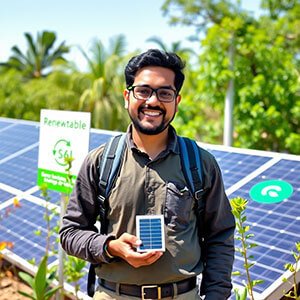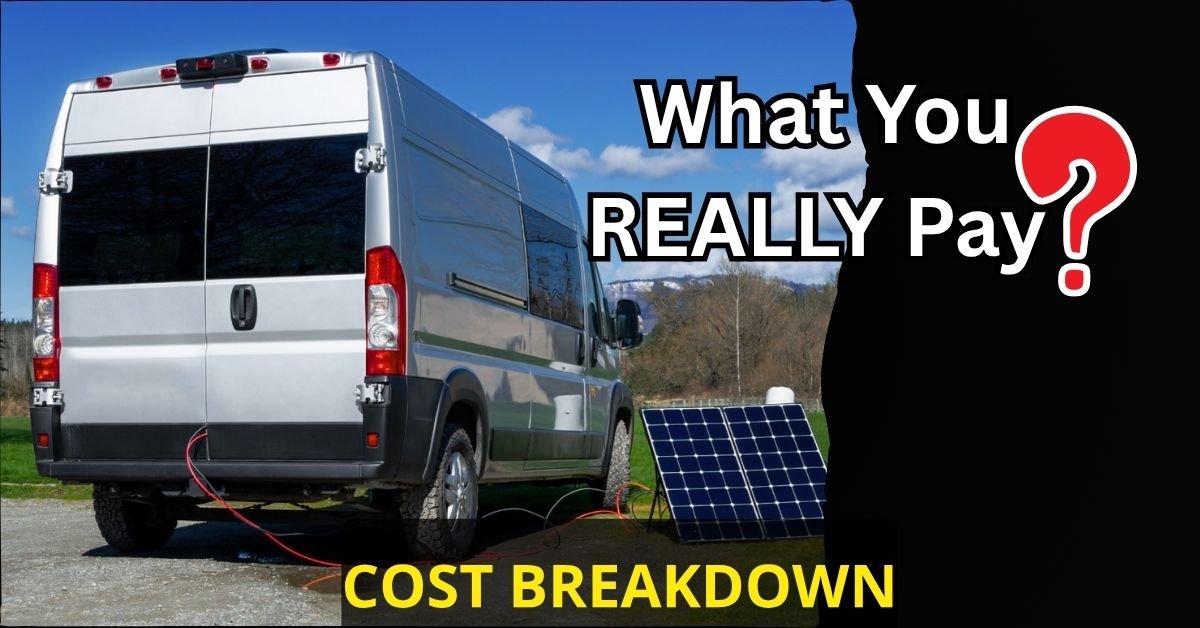“How to Safely Connect Solar Panels in Series or Parallel Without Errors for Maximum Output (Expert Tips Inside)”
When setting up your solar power system, one of the most crucial choices is how to connect your solar panels: in series or parallel. This impacts your system’s voltage, current, efficiency, and compatibility with your inverter or charge controller.
💡 Choosing the wrong configuration can bottleneck your system or even cause damage. But don’t worry, this guide breaks it down in a way that’s easy to understand and implement.
Series vs. Parallel Connection Explained
Many DIY solar enthusiasts struggle with choosing the right configuration; wrong connections can lead to power loss, overheating, or even system failure. In this article, I will try to learn you about the differences between series and parallel wiring, when to use each, and step-by-step instructions with diagrams.

By the end, you’ll confidently know how to connect solar panels in series or parallel for optimal energy output.
What Is a Series Connection?
Definition: In a series connection, solar panels are linked end-to-end, where the positive terminal of one panel connects to the negative of the next.
- Effect on Voltage: Adds up (e.g., two 12V panels = 24V total).
- Effect on Current (Amps): Stays the same as a single panel.
- Best for increasing system voltage.
✅ Best for: Systems with MPPT charge controllers or long wire runs (reduces power loss).
What Is a Parallel Connection?
Definition: In a parallel setup, all panel positive terminals are joined together, and all negative terminals are connected.
- Effect on Voltage: Stays the same (e.g., two 12V panels = 12V total).
- Effect on Current (Amps): Adds up (e.g., two 5A panels = 10A total).
- Ideal for keeping voltage low and safe.
✅ Best for: Systems with PWM charge controllers or shading issues (minimizes power drop).
Combined (Series-Parallel)
- For larger systems, a series-parallel setup may be used.
- Multiple series strings are wired in parallel to balance voltage and current.
| Configuration | Voltage Behavior | Current Behavior | Best Use Case |
| Series | Adds up | Stays the same | High-voltage needs |
| Parallel | Stays the same | Adds up | Shaded environments |
| Series-Parallel | Mix of both | Mix of both | Large arrays |
Voltage, Amperage & Watt Differences
Understanding how electricity behaves in each configuration is key to designing a safe and efficient solar array.
Basic Electrical Relationships
- Power (Watts) = Voltage (V) × Current (A)
- A 12V, 10A system produces 120W
- Two 12V, 10A panels:
- In series : 24V, 10A → 240W
- In parallel : 12V, 20A → 240W
💡 Tip: Watts remain the same regardless of configuration. Only voltage and current change.
Real-World Example
Let’s say you have three 12V, 10A solar panels (Every solar panel is = 120 watts):
| Connection Type | Total Voltage | Total Current | Total Power |
| Series | 12V × 3 = 36V | 10A | 360W |
| Parallel | 12V | 10A × 3 = 30A | 360W |
| 2S + 2P (Hybrid) = Need 04 pisces solar panel | 12V × 2(S) = 24V & 12V × 2(S) = 24V, then 24V x 24V = 24V(P) | 10A x 2(P) = 20A | 480W* |
- * To build a 24V system, you need to connect two 12V panels in series to create one 24V string.

It means, for a balanced and efficient 24V solar system, you need at least 4 panels, configured as 2S2P (2 panels in Series, then 2 such strings in Parallel).
✅ 12V + 12V (in series) = 24V
✅ Another 12V + 12V (in series) = 24V
Then, connect these two 24V strings in parallel. → You get a 24V system with higher current.
This flexibility allows you to tailor your system to match your inverter or charge controller specs.
When to Use Which: Matching Your System Needs
Choosing between connecting solar panels in series or parallel depends on several factors:
✅ Go With Series If:
- You’re using a MPPT charge controller that can handle high voltage.
- You live in a cold or cloudy climate (higher voltage helps overcome resistance).
- You want longer wire runs without significant power loss.
- Your inverter has a high-voltage input range.
✅ Go With Parallel If:
- You’re using a PWM charge controller (lower voltage required).
- Your installation includes partial shading.
- You prefer simpler, safer wiring (lower voltage).
- You need consistent current output across panels.
🧭 Hybrid Systems
For large-scale installations (e.g., 4+ panels), combining both methods ensures optimal voltage and amperage levels for grid-tied inverters or battery banks.
🧑🔧 Pro Insight: Always check your inverter or charge controller’s maximum input voltage and current limits before wiring.
🧠 Experience Note: I installed a 3-panel series setup for my off-grid shed. It performed better in cold, bright conditions, but failed when one panel was shaded. Switching to parallel fixed that.
Tools You’ll Need
Make sure you have the right tools and materials to wire safely and efficiently:
| Tool/Item | Purpose |
| MC4 connectors | Secure, weatherproof panel connections |
| Solar combiner box | Combining parallel circuits safely |
| Circuit breakers/fuses | Protect against overloads |
| Multimeter | Test voltage and continuity |
| Wire strippers/crimpers | Prepare and secure connections |
| UV-resistant solar cable | Prevent degradation outdoors |
| Mounting hardware | Secure panels to the roof or ground |
| Safety gloves/goggles | Prevent shocks/injuries |
⚠️ Safety Tip: Always disconnect panels from the system before working on them. Even small solar setups can generate dangerous voltages.
Step-by-Step Wiring Diagrams
Here are simplified diagrams for each configuration. Always follow the manufacturer’s specifications and local electrical codes.
How to Connect Solar Panels in Series
Tools Needed: MC4 connectors, crimping tool, multimeter.
Series Wiring Diagram:
[+ Panel 1 -] — [+ Panel 2 -] — [+ Panel 3 -]
Connect remaining + and – to the charge controller.
Steps:

- Connect the positive MC4 connector of Panel 1 to the negative MC4 of Panel 2.
- Repeat the process for additional panels.
- Connect the remaining open ends (Panel 1 negative and last panel positive) to your charge controller or inverter.
- Test the total voltage with a multimeter, it should equal the sum of each panel’s voltage.
How to Connect Solar Panels in Parallel
Tools Needed: Branch connectors, MC4 Y-splitters.
Parallel Wiring Diagram:
[+ Panel 1 +]
[+ Panel 2 +] –> Join all + together
[+ Panel 3 +]
[- Panel 1 -]
[- Panel 2 -] –> Join all – together
[- Panel 3 -]
Steps:

- Attach all positive leads to a solar combiner box or parallel connector.
- Attach all negative leads to the corresponding side of the combiner box.
- Run a single pair of wires (positive and negative) from the combiner box to your inverter or charge controller.
- Measure the current, it should equal the sum of each panel’s amperage.
FAQs & Common Mistakes
1. Can I Mix Different Solar Panels?
➡ Answer: It’s possible but not ideal. Mismatched panels in series can limit current, while parallel connections may cause imbalance.
2. What Happens If I Wire Them Wrong?
➡ Answer: Reverse polarity can damage charge controllers or inverters. Always double-check connections.
3. Does Shading Affect Series vs. Parallel?
➡ Answer: Yes! Shading one panel in a series drops the whole system’s output. Parallel is better for shaded setups.
4. How Many Panels Can I Connect?
➡ Answer: Check your charge controller’s max input voltage/current. Exceeding limits can cause overheating.
Common Mistakes to Avoid:
- Mismatching voltage with controller input
- Skipping fuses or breakers
- Incorrect polarity connections
- Using cables not rated for outdoor or high-amp use
Expert Advice & Final Tips
- Use identical panels whenever possible for maximum efficiency.
- Always label your connections to avoid confusion later.
- Install fuses or circuit breakers between the solar array and battery/inverter.
- Choose UV-resistant cables rated for outdoor use.
- Keep wiring as short as possible to minimize losses.
📚 Source: Based on National Renewable Energy Laboratory (NREL) guidelines and Energy.gov best practices for solar installations.
Mastering How to Connect Solar Panels in Series or Parallel
Knowing how to connect solar panels in series or parallel is a foundational skill for any DIY solar enthusiast or installer. Whether you prioritize voltage for long-distance runs or current stability in shaded areas, the right configuration makes all the difference.
Remember:
- 🔹 Series = Higher voltage, better for long distances.
- 🔹 Parallel = Higher current, better for shading.
🛠️ Start small, test your setup, and scale smart. Bookmark this guide and refer back any time you’re planning or troubleshooting your solar array.
Related Post: Solar Panel Wattage Explained: How Many Watts Do You Need?
🚀 Ready to Build Your Solar System?
Whether you’re setting up a tiny home, RV, or backyard shed, the right wiring method ensures optimal performance and longevity. Don’t leave your solar potential to chance. Plan carefully, wire smartly, and enjoy clean, renewable power for years to come.
Ready to install? Grab your tools, follow the diagrams, and test with a multimeter before finalizing connections.
📌 Need more help? Write your problem in the comment box or consult a certified solar installer.







